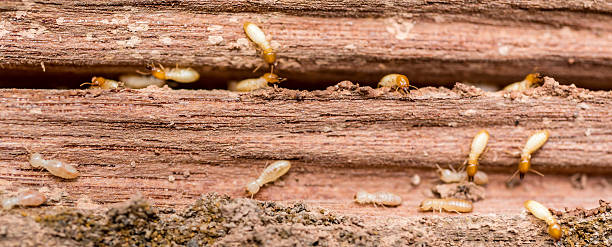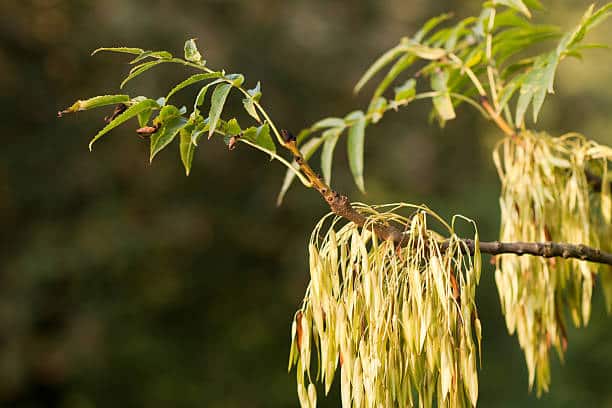The annual plant species known as zonal geranium (Pelargonium hortorum) shares a similar appearance with other geranium species. The central zone of red, blue, or purple striping on the leaf of a zonal geranium is what makes it unique.
Unlike other geraniums that are permanent growers and bloom all year round, this species usually only flowers for a single season. Blooms from zonal geraniums can be red, pink, burgundy, salmon, or white, among other hues.
Table of Contents
- How to Maintain Zonal Geranium
- Fantasia Premium Geraniums
- Superior Zone Geraniums
- Hanging Baskets of Geranium Zonal
- Zonal Geranium Seeds
- Zonal Geranium Colors
- Zonal Geranium Description
- Zonal Geranium Use
- How t o Grow and Care for The Citronella Plant
- What Are Citronella Plants
- Frequently Asked Questions
- References
- Recommended Posts
How to Maintain Zonal Geranium
Follow through the guide below on how to care for a zonal geranium:
Water
Regular soil moisture testing can be done with your finger. If there’s no more than 2 cm of dry soil, watering is needed. The soil should be well-watered in the spring and fall, and any surplus water should drain away with ease. When watered too frequently or when there is an excessive buildup of water, the succulent stems of zonal geraniums will decay.
Also read this: How to Stack a Cord Of Wood
Merely 25% of the soil volume in the flowerpot is needed for watering in the summer and winter. Pour water all the way around the edge of the flowerpot. In the spring, fall, and summer, water the soil early in the day or late at night. Winter water during midday.
When watering zonal geraniums, soft water that is slightly acidic or neutral will have fewer minerals in them. Appropriate soft water includes things like lake, river, and rainwater. After storing the water for a day or two, certain minerals precipitate, and the water’s temperature will be closer to room temperature, making tap water suitable for watering the plants.
Trimming
After autumn, maintain only three to five robust main branches that are evenly spaced and close to the base, depending on the growth of the zonal geranium. Remove the remaining weak and slender branches straight from the root.
On the branches, only robust lateral buds should remain; the others should be removed. After pruning, fresh, tidy branches will sprout and eventually bloom in about five days.
Apply Fertilizer
Both before and after blooming, a phosphorus-containing complex fertilizer can be applied. The size of the flowerpot affects how much fertilizer is used. For instance, a flowerpot with a diameter of 20 cm should have between 5 and 10 g of fertilizer.
Fertilize zonal geranium plants once before they bloom, and then again when the blooms have withered. Granular fertilizer should be buried at the edge of the flowerpot and kept a suitable distance from the plants, whereas liquid fertilizer can be irrigated immediately. You can also apply fertilizer with a slow release.
After applying the fertilizer, track the growth for six to nine months.
Malnourished zonal geranium indicates a depletion of soil nutrients, as evidenced by decreased flowering, yellowing of small leaves, slower development, etc. Three to four weeks after fertilization, the plant will gradually recover if you provide more fertilizer.
Soil
A loose, fertile, sandy, permeable, somewhat acidic culture soil with humus is necessary for zonal geranium growth. Typically, it is grown on a mixed soil consisting of 50% Canadian peat, 25% vermiculite, and 25% perlite, or 75% peat and 25% perlite.
Clean the soil after combining several culture medium, and then add the proper quantity of calcium superphosphate and organic fertilizer that has broken down. It is best to maintain the pH level at roughly 6.0. Water buildup should be prevented, and the soil should be damp but not completely dry.
The Translanting Methods
To provide that ideal growing circumstances for zonal geranium, it is recommended to transplant in the early to late spring or mid-fall to early winter. To promote healthy growth, pick a spot with plenty of sun, well-drained soil, and excellent ventilation. Know that these plants like a soft touch when being transplanted!
Checkout more article on: How to Clean Mineral Stains From Your Toilet
Dark-leafed Fantasia Geraniums are medium-vigor plants. Fantasia has vivid, lollipop-like blossoms that contrast nicely with the greenery. It offers a pleasing variety of hues. Plants are the same color throughout. Fantasia works well in window boxes, borders, landscapes, and smaller pots because it is slightly smaller than Americana.
Plant Fantasia 12–14 inches apart in full light. They get 12–14 inches tall.
Superior Zone Geraniums
Premium Annual size category, we have Zonal Geraniums available. Medium vigor and consistency throughout their color spectrum characterize Americana geraniums. It’s an excellent option for all gardens and containers because of its uniformity and versatility.
Zonal Geranium flower clusters can reach a diameter of 4 or 5 inches. Unlike certain types, they will withstand wind, rain, and heat better without breaking. While deer and rabbits tend to stay away, butterflies will flock to the aromatic blooms.
14–18 inches apart, plant geraniums in full light. 12 to 16 inches is their height when grown.
Hanging Baskets of Geranium Zonal
One of the most widely used spring plant accessories is hanging geranium baskets. They are everywhere across the nation, hanging from patios and porches.
We adopt a targeted approach with our Zonal Geranium baskets. Our selection of the top-performing colors from several series comes from many years of cultivating Zonal baskets. We’ll keep expanding to provide the best service possible for our clients as each year brings with it new introductions.
Mojo, Pretty Little, Americana, and Tango series are among the ones we stock. Salmon, White Splash, Pink Splash, Dark Red, Pink Splash, and Cranberry Splash are among the colors.
Zonal Geranium Seeds
There are no seeds produced by the zonal geranium. The only method of zonal geranium propagation is tissue cuttings. In addition, it is the more typical of the two. In nurseries, it has been widely propagated to create taller plants with faster growth rates and novel bloom colors.
Read: Top 10 Fire-resistant Building Materials that are trending
Zonal Geranium Colors
In contrast to other geranium species that are perennial growers and bloom all year round, this variety usually only flowers for one season. Rose, pink, burgundy, salmon, and white are just a few of the hues that zonal geranium flowers can display.
Zonal Geranium Description
Rose, pink, salmon, white, rose, cherry-red, or bicolored blooms on long stems carried above the plant cover the upright geraniums, also known as zonal geraniums. Numerous individual flowers come together to form flower clusters, orumbels, which provide a flash of color.
Zonal Geranium Use
Uses: In any sunny place, zonal geraniums add pockets of color. For maximum color impact in flower borders or along walks and paths, group three or more together.
Classics in pots, either alone or combined with other plants. Under bright windows, they will continue to bloom all winter long.
The most common geraniums are annuals, but you can easily conserve them for the winter. Simply move them indoors before to the fall frost and plant them outdoors again in the spring. These are a few of the most widely used geranium varieties.
Checkout this? How to Wash White Clothes With Color in Them
Zone Geranium
The most popular variety of geraniums are zonal ones, which have robust flower stalks crowned with balls of blossoms. The term refers to patterns on leaves that get more complex as they age. Flowers on zonal geraniums open in a rainbow of colors, such as bicolor blends, peach, red, pink, and white.
Martha Washington Geranium
The stunning velvety petals of Martha Washington geraniums, sometimes referred to as regal geraniums, come in a variety of colors, including burgundy, pink, white, and bicolor mixes.
A cool-season flower, Martha Washington geraniums are typically available in the early spring.
This plant is a popular choice for springtime gifts, such as Mother’s Day and Easter. It is difficult to get new blooms once they fade, with the exception of areas with chilly summers.
Also: Can You Put Screws in Concrete?
The Ivy Geranium
Look for an ivy geranium if you want to make a hanging geranium basket. This geranium grows in a trailing manner by nature. It’s ideal for window boxes and hanging baskets. ues, such as lavender, pink, burgundy, white, and bicolor mixes, are seen when flowers bloom.
Variegated Geranium
Variegated geraniums enhance the geranium experience by adorning the plant with rainbow leaves. This variety of zonal geranium can reach a height of three feet and grows vigorously upright. Though they can also have three different hues, such as cream, green, and bronze, leaves are often green and white. In pots, where the vibrant foliage are visible up close, they look amazing.
Hybrid Interspecific Geranium
The interspecific hybrid geranium is gotten when a zonal geranium and an ivy geranium are crossed. Huge, continuously blooming flowers on a plant with a full, mounding, or slightly trailing growth habit is like having the best of both worlds in one plant.
Nice color is added to planting beds and containers by these heat-tolerant geraniums, which can withstand the intense heat of Texas. Calliope and Calliente are two popular types.
Read more: Painter’s Tape vs. Masking Tape: What’s the Difference?
The Scented Geranium
Amazing scents are released from scented geranium leaves when brushed or rubbed. Cinnamon, nutmeg, peppermint, chocolate, and lemon are among the fragrances. This cultivar marketed as lime pink champagne, has leaves that smell like lime (above).
Scent-infused sugar or oil infusions, potpourri, and baked items can be enhanced by adding fragrant geranium leaves. Attar Roses, or Pelargonium capitatum, is an essential oil that is produced from a geranium that smells like roses. It used to be common to replace pricey rose attar in perfume.
Pelargonium is another botanic name for this group of geraniums. The plants reach heights of 6 to 36 inches as they mature. Larger-leaved scented geraniums grow taller, whereas smaller-leafed varieties tend to be smaller plants. The scent of older leaves is more intense than that of younger ones.
Pelargonium graveolens, which smells like sweet roses, is a popular kind. Citronella scented geranium is also popular; however, research indicates that it doesn’t actually repel mosquitoes.
Since scented geraniums are indigenous to South Africa, you will need to bring them inside for the winter, unless they are in the warmest regions. Fortunately, these jewels do well in containers, making indoor geranium overwintering a breeze.
How to Grow and Care for The Citronella Plant
Do plants with citronella repel mosquitoes?
Only one of the two varieties of citronella plants exhibits any effect on bothersome insects. However, they both grow well.
Mosquitoes, hungry, are in large numbers on balmy summer days. Some gardeners use citronella and other plant companions as a means of protection from biting bugs instead of running indoors. How should we cultivate and tend to these herbs that smell of lemons?
See more: How Pilot Lights Work | Thing you don’t know
What Are Citronella Plants
Citronella is a plant chemical that is produced in different amounts, by related species of citronella grass. The essential oils of two sources of citronella, Ceylon citronella (Cymbopogon nardus) and Java citronella (Cymbopogon winterianus), contain the chemicals citronellol and citronellal.
Frequently Asked Questions
While seed geraniums are propagated using seeds, zonal geraniums are propagated through cuttings. They are genetically modified plants known as “zonal geraniums” are grown with the intention of yielding robust, stronger zoned leaves and resilient flowers. 2. Compared to seed geraniums, zonal geraniums grow and flower more quickly.
Among the many characteristics that set a zonal geranium apart are its round to nearly kidney-shaped leaves, which may or may not have a darker circular mark on them. The mark could be burgundy or dark green in color. The term “zonal geranium” was first used to describe this mark or zone.
Although they can live much longer, geraniums typically have an approximate two-year lifespan. After that, plants tend to get woody and produce fewer blooms. Fortunately, geraniums are easy to propagate.
Geraniums are edible and have fragrant foliage as well as edible flowers that can be utilized in cooking.
References
Recommended Posts
- What is a Monkey Wrench? Full Answer
- 50 Inspirational Books For Women
- How Dryer Sheets Work ? Full Tips and Guidelines
- How to Get Mold Out of Clothes | Full Guide





